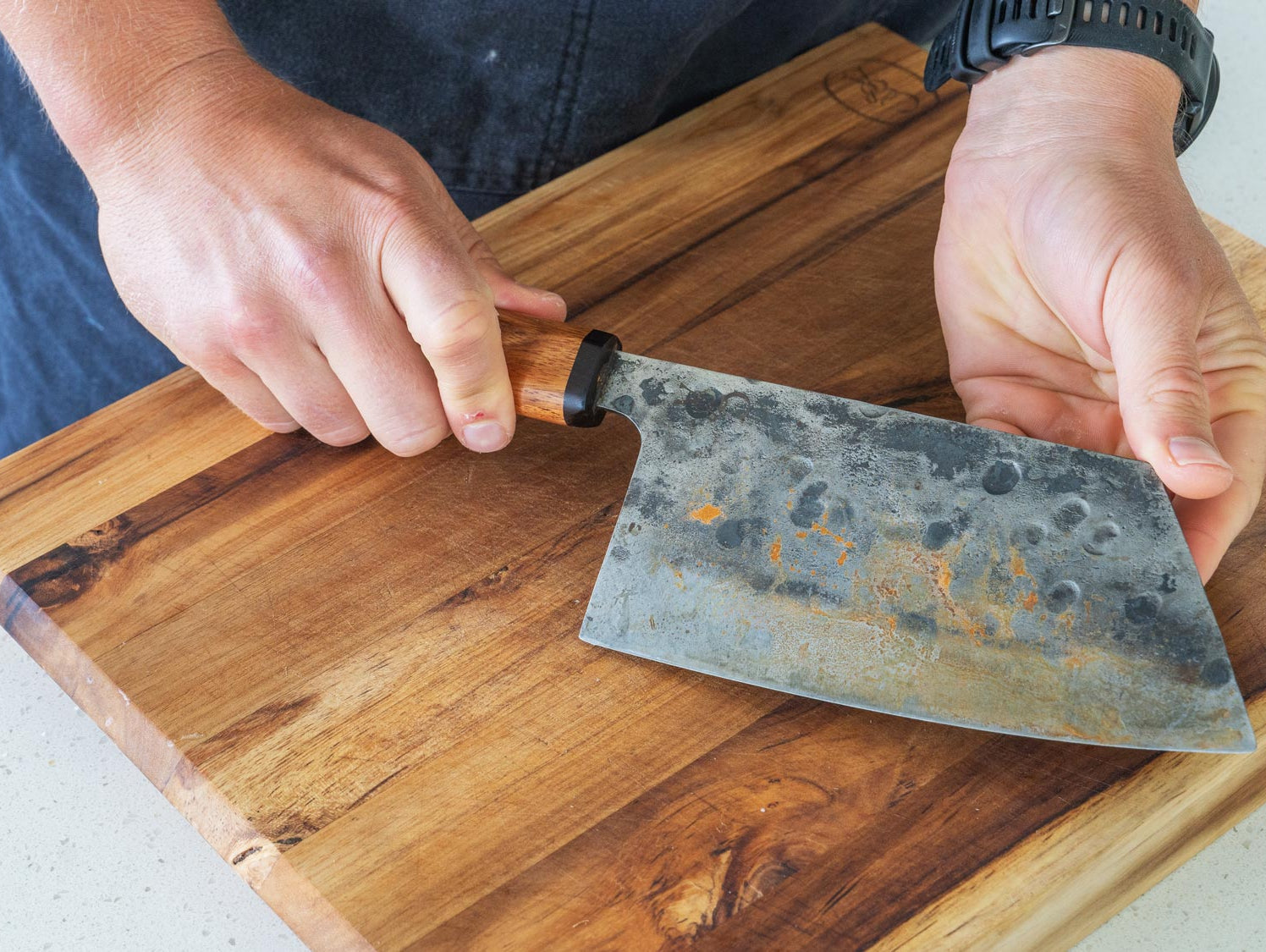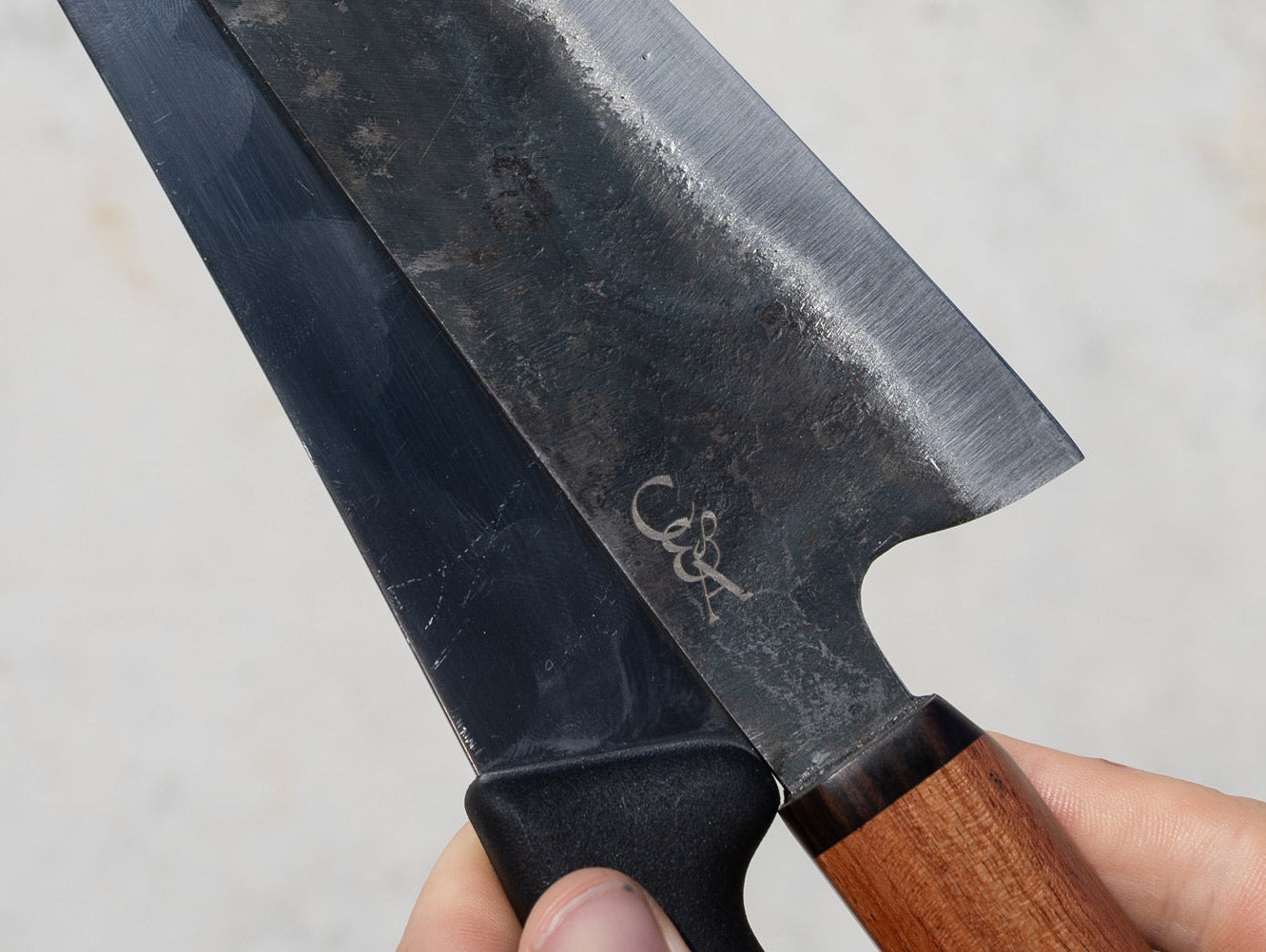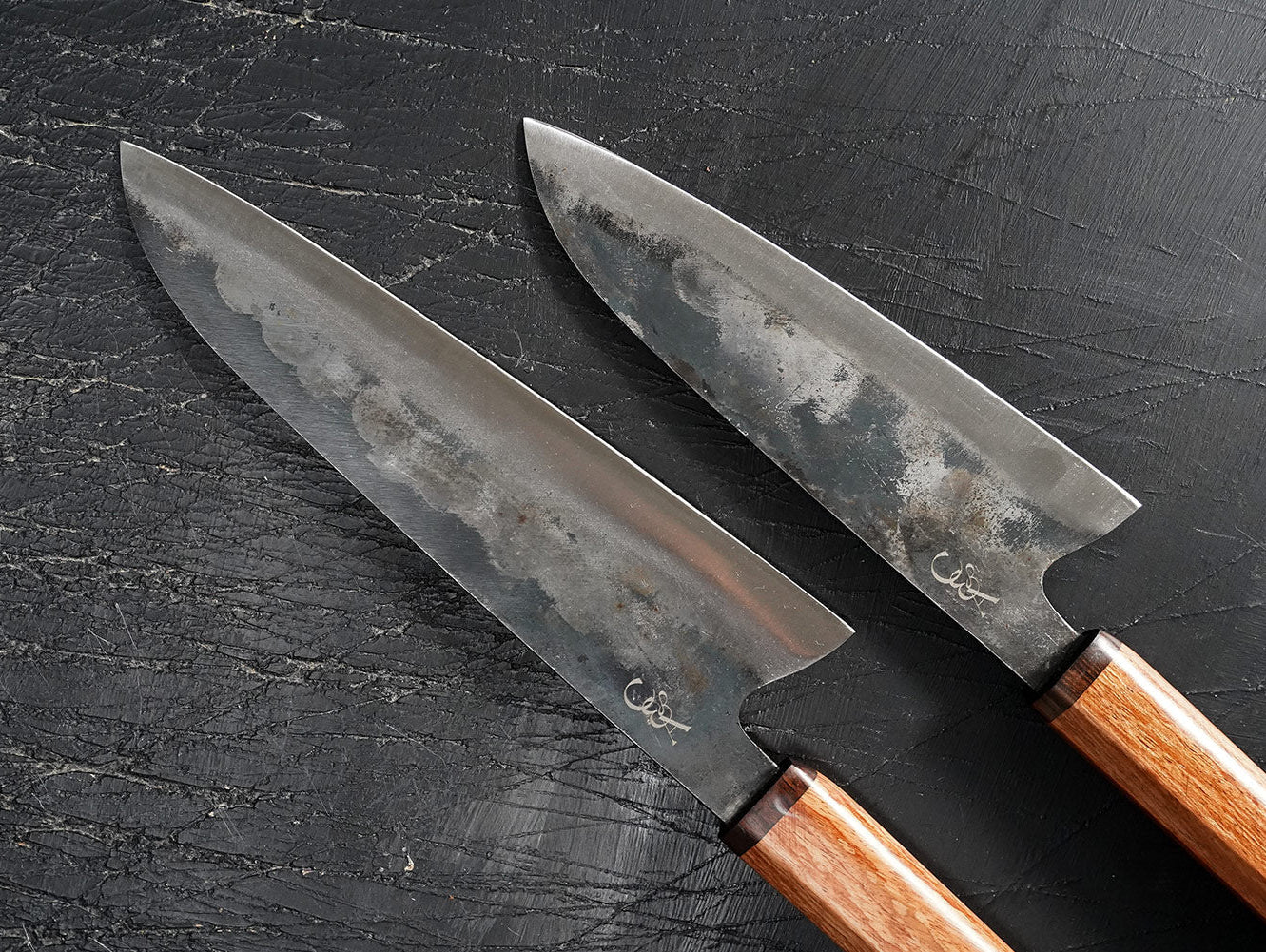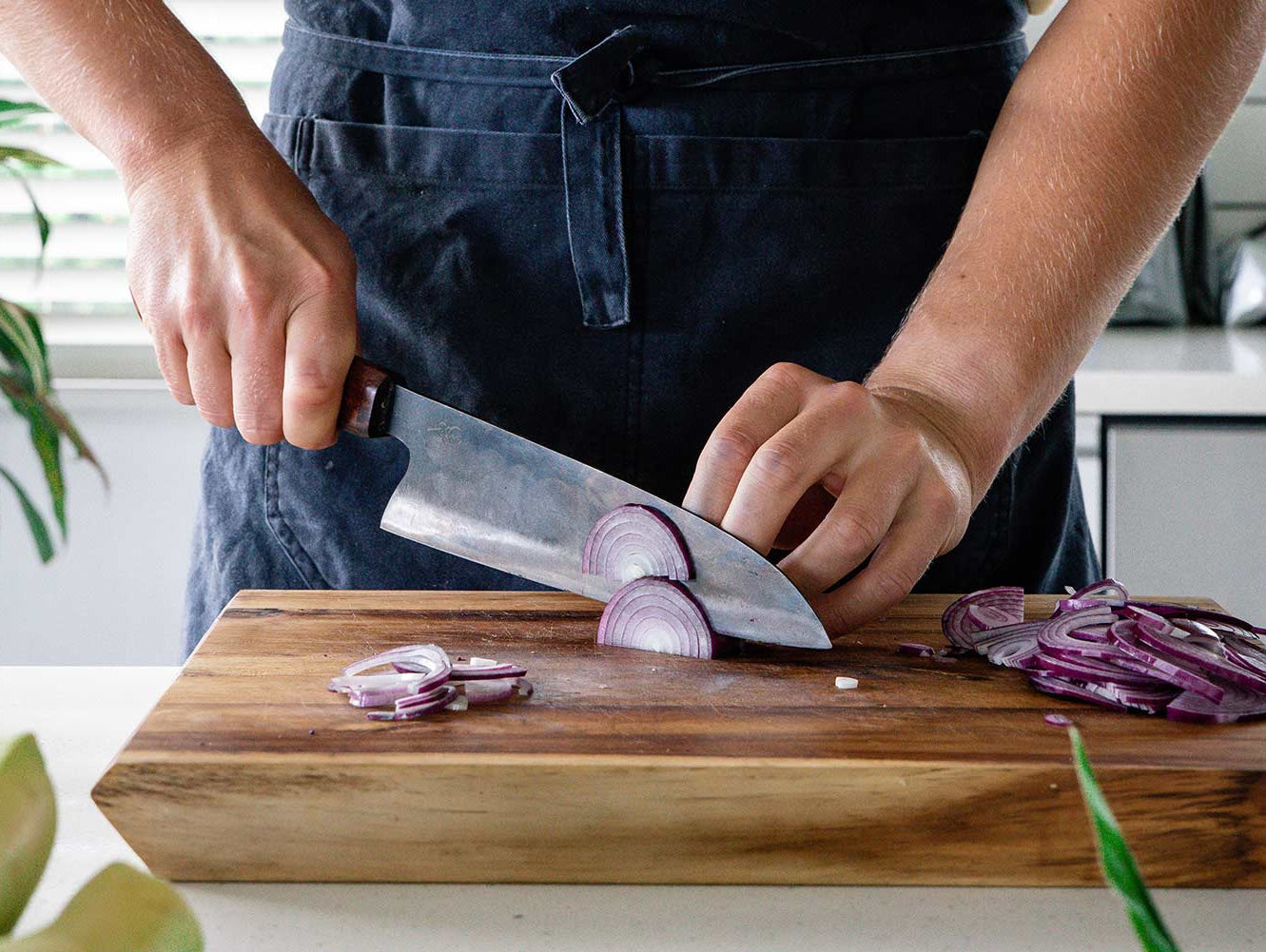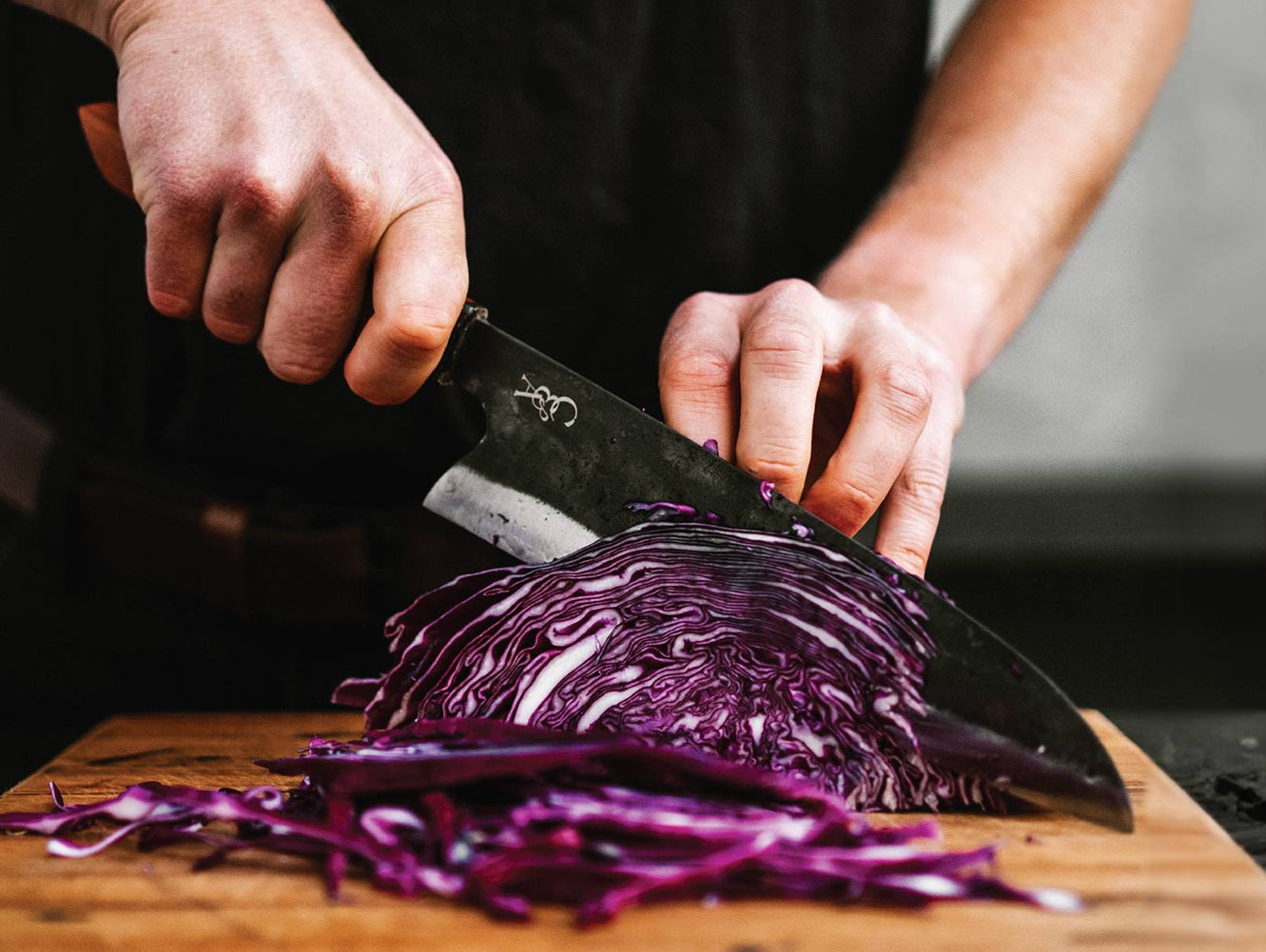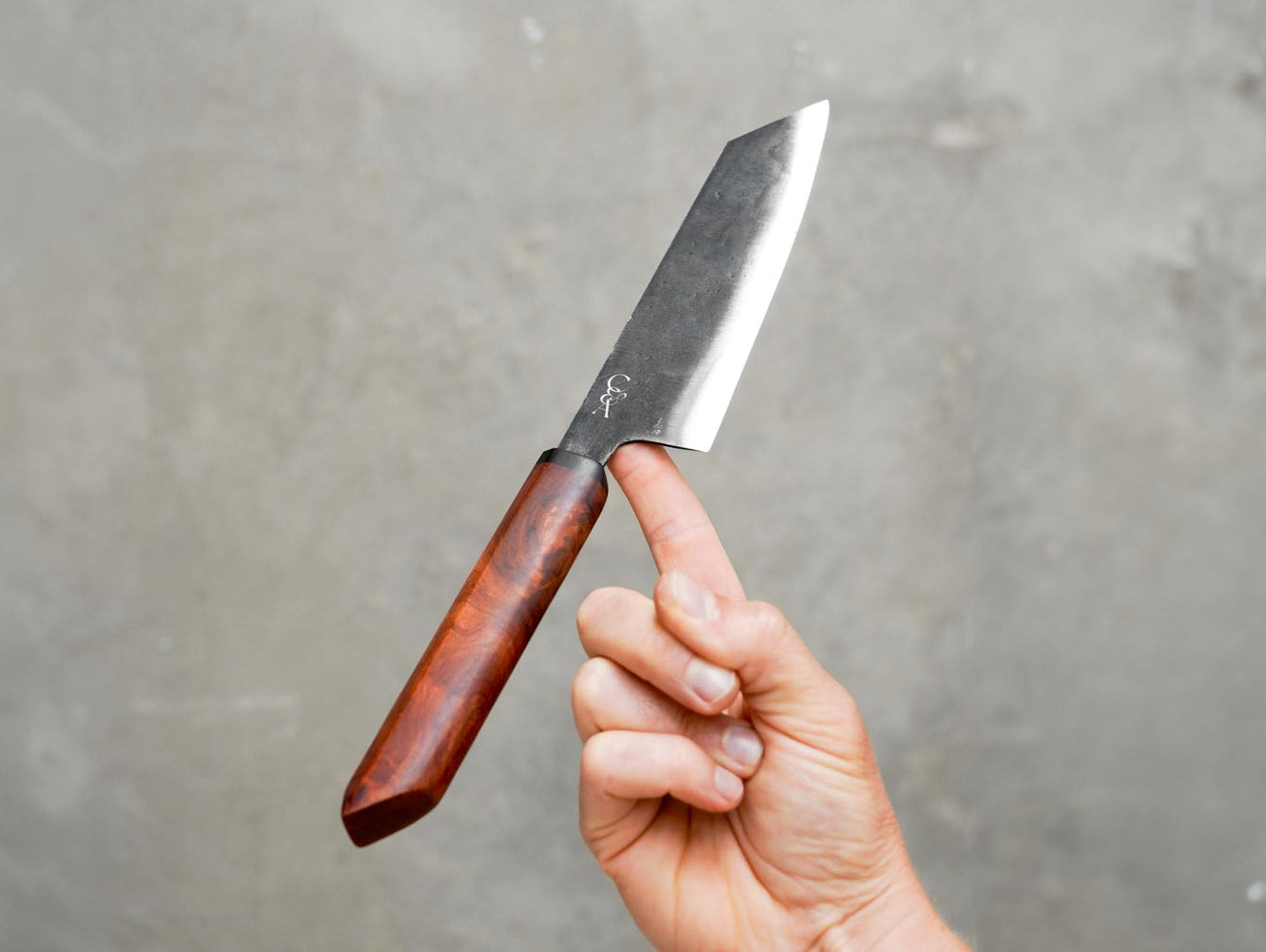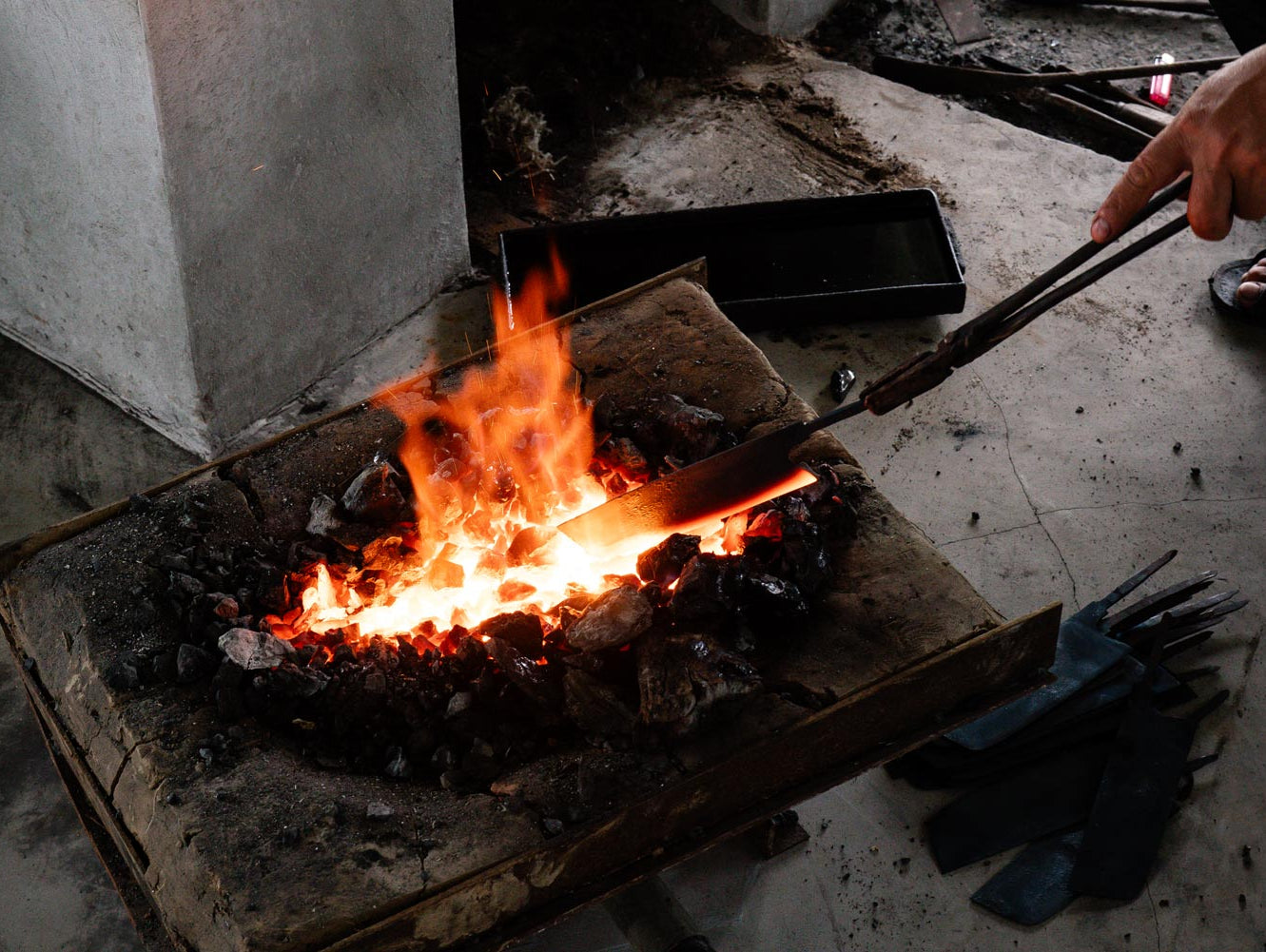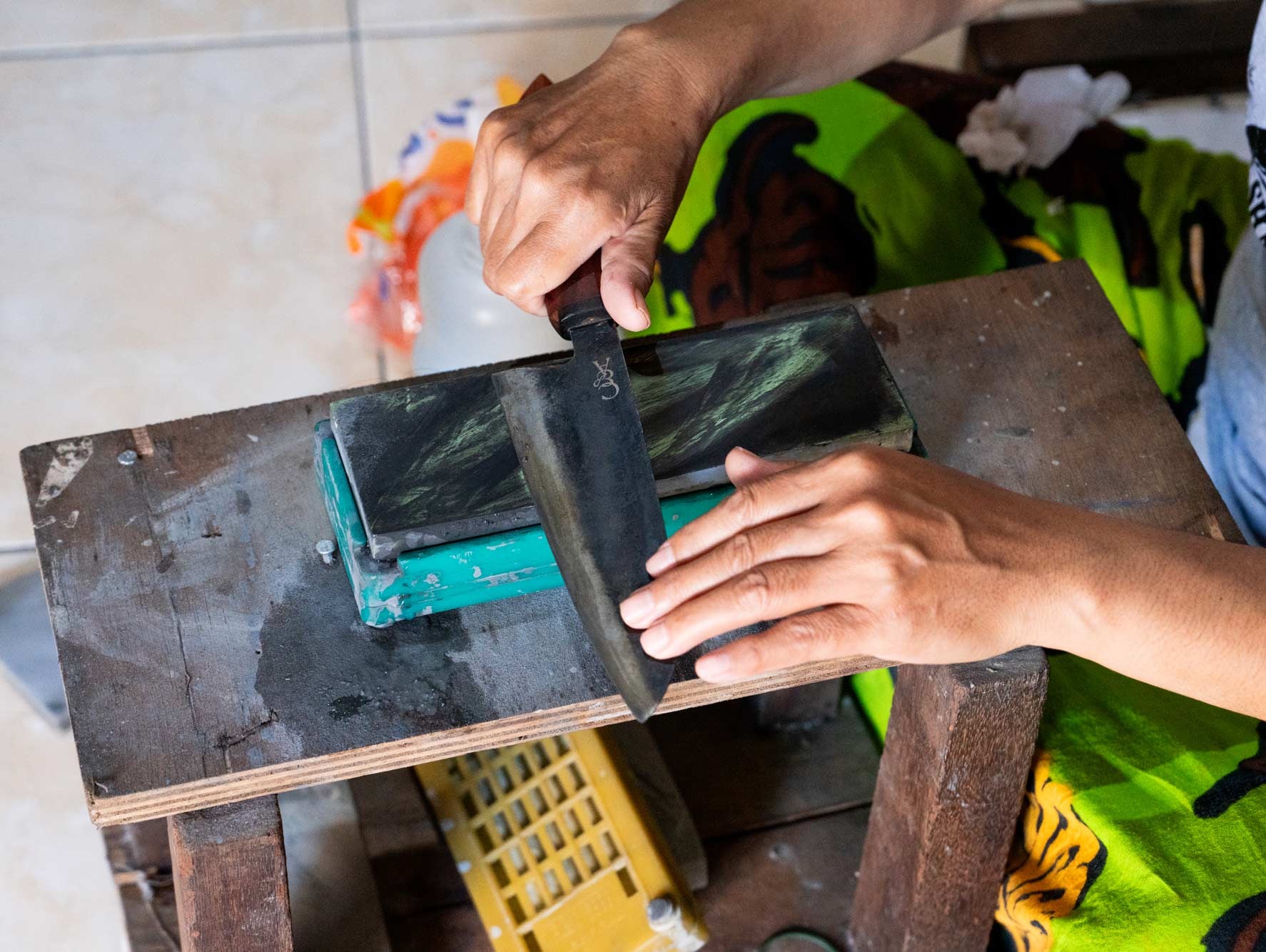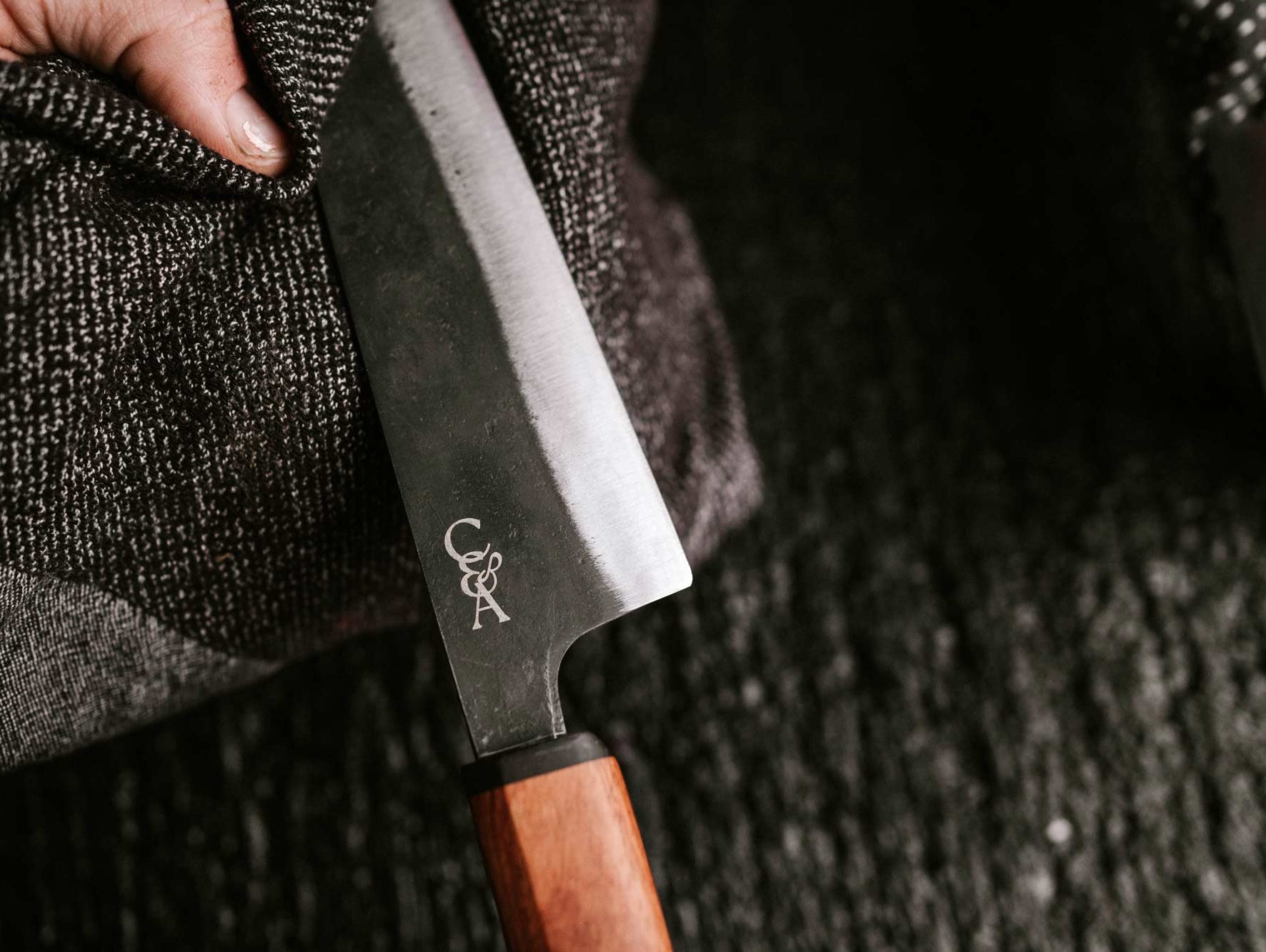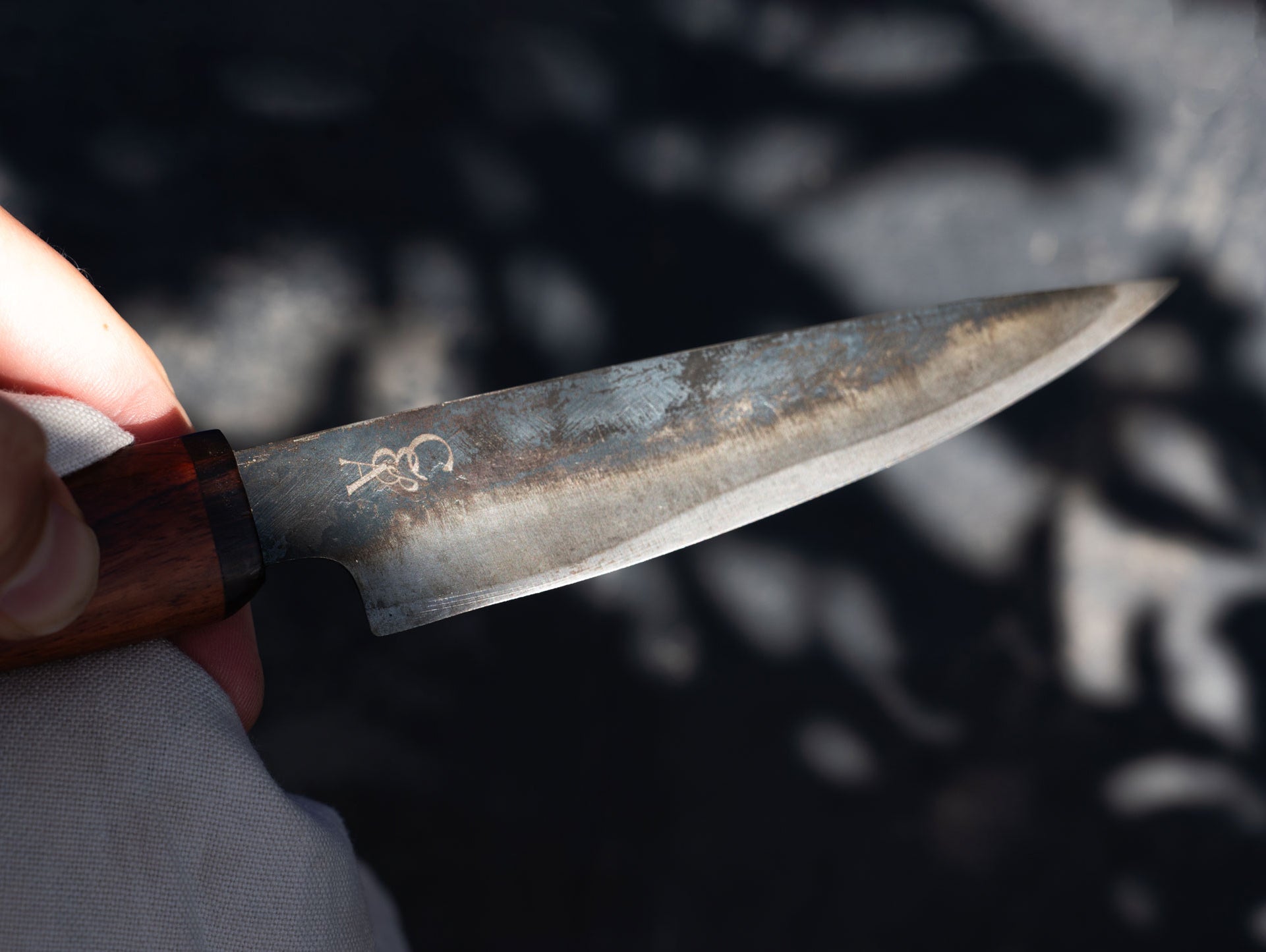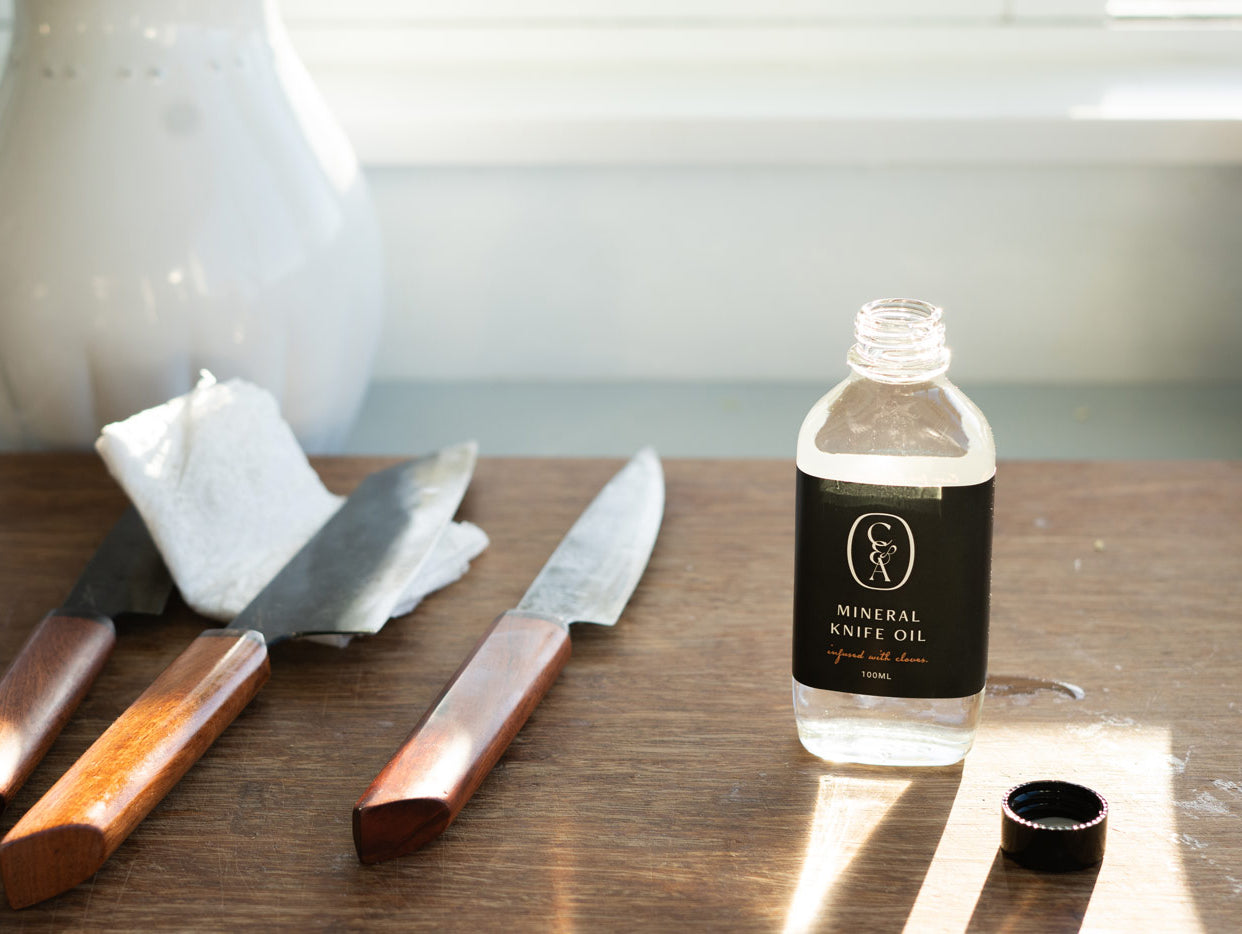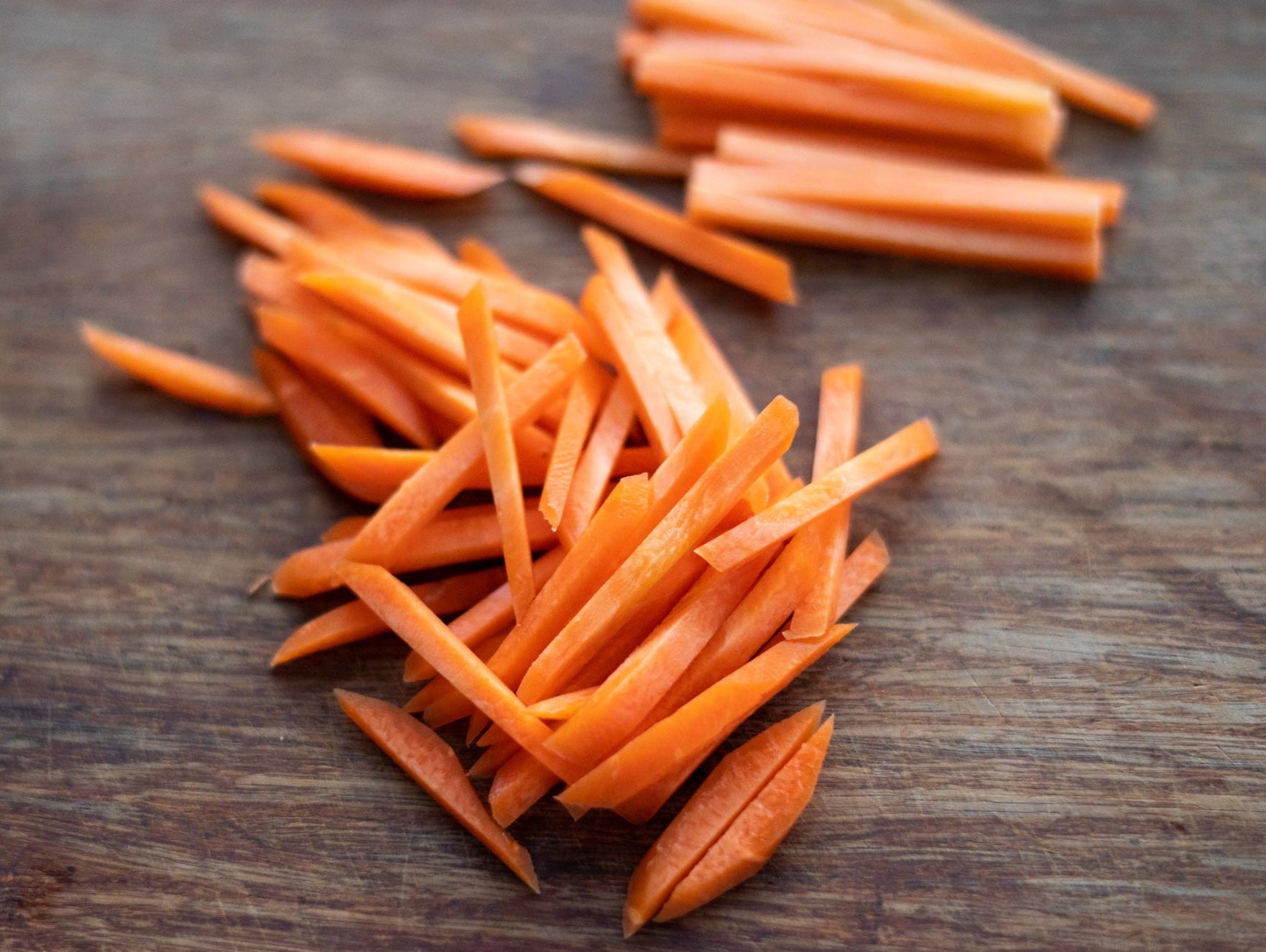Articles
Left Your Knife Wet? Here's How to Fix It (And Why It Happens)
Our knives are made from carbon steel. That’s what makes them sharp, easy to keep sharp, and enjoyable to use. But carbon steel will rust if it stays wet for too long. That’s just part of using a real carbon steel blade. Here's how to fix it.
Stainless Steel vs Carbon Steel Knives: Which Is Right for Your Kitchen?
Comparing stainless steel and carbon steel knives? Discover the pros, cons, and why carbon steel is the best choice for cooks who value sharpness and feel in the kitchen.
What Is A Santoku Knife?
If you've been wondering, "What exactly is a Santoku knife, and do I really need one?" You're not alone. Santoku knives have surged in popularity, becoming a favourite in both home and professional kitchens worldwide. Let's dive into why this versatile blade is quickly becoming a must-have.
Why Do Knives Go Blunt? And How to Keep Them Sharp.
Even the best blades start to lose their edge. Understanding why knives go blunt and how to maintain them properly will keep your blade performing at its best for longer.
Why Carbon Steel Makes The Best Kitchen Knife
Carbon steel knives are sharper, hold their edge longer, and sharpen up easier than stainless. They give you better control in the kitchen, thanks to a fine edge that bites into food instead of sliding off. If you actually care about how your knife performs, carbon steel is the way to go

